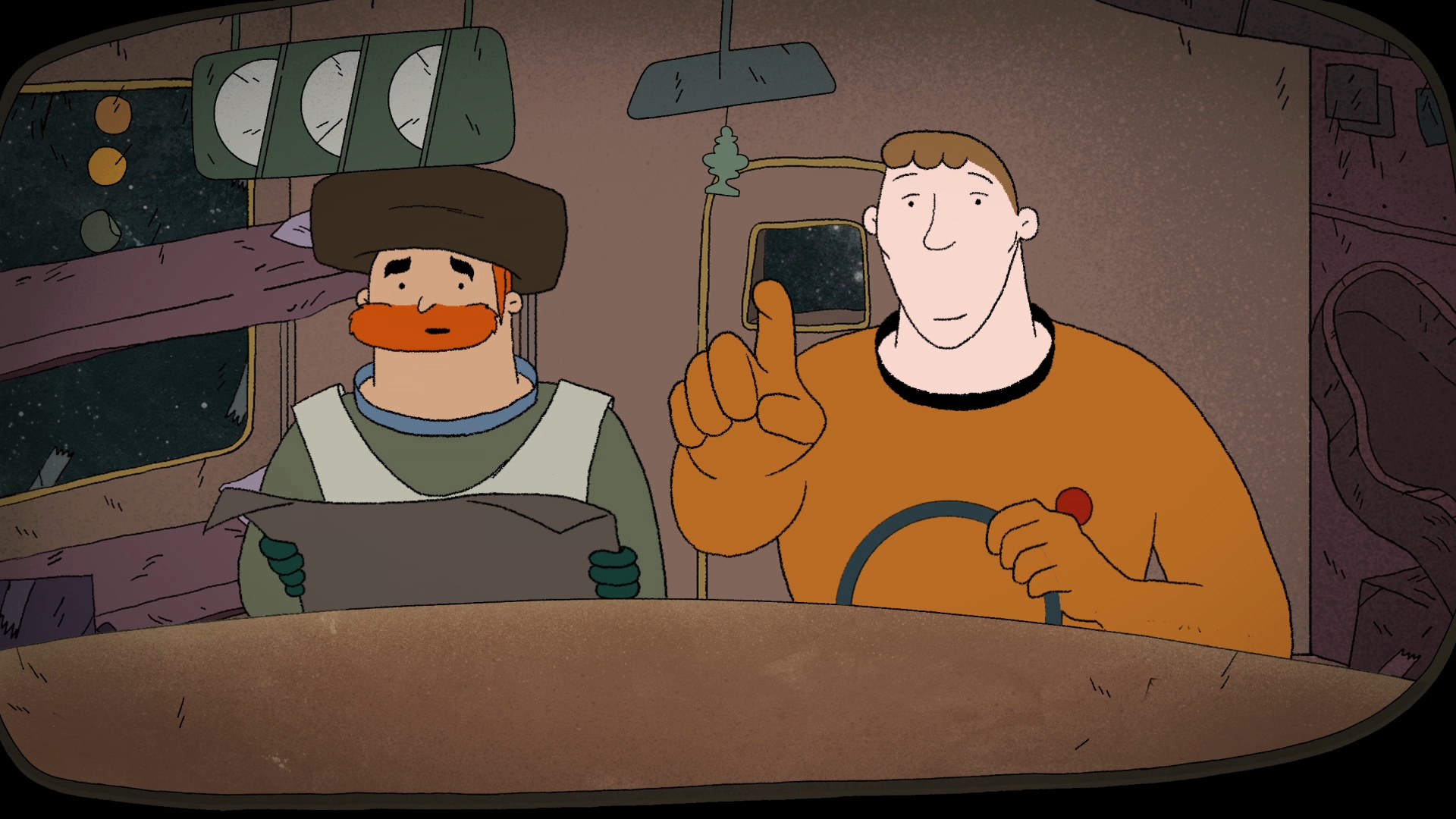Niggun by Yoni Salmon
Niggun is a science-fiction hand drawn animated film that mixes the theme of spiritual quest with a space odyssey. It takes place in a post apocalyptic future where earth is gone and Jerusalem has become a legend. The original idea for the film began with a small illustration I made of David Bowie’s Space Oddity, depicting major Tom floating in a tin can. The theme of being lost in space representing some kind of existential crisis made me look for a story behind that astronaut (Fig. 1). In my point of view, Jews were never meant for space travel. Judaism is a very “earthly” religion and the Jewish tradition has a lot to do with space and time as they are approached, while standing with two feet on the ground. For example the Jewish Shabbat (Saturday, the holy day) is scheduled by sunsets and the new month, and by the moon being reborn from an earthly perspective. Space is also a factor in Judaism and mainly situated on earth: the Holy Land is a piece of real estate located on our little blue planet and it’s part of many practices and rituals. Jewish prayers are spoken facing Jerusalem. In space a Jew will not know when to pray or where to address his prayers. That is why I, and Alon Rothem co-creator of the film, wanted to send Jews into space to rethink these dimensions of Judaism under different circumstances.
Niggun (Yoni Salmon & Alon Rothem, 2017).
As the development of Niggun took off I joined forces with Alon, a screenwriter who was himself new to animation at the time, and we became creative partners. Alon and I came from different backgrounds. I am an animator and a religious Jew while he is a script-writer and an atheist Jew. However, we found that the theme and the story of Niggun were relevant to both of us. In the search of the meaning of being a Jew in the 21st century, we were looking in very similar places and the film reflects that - while the heroes of the film are in some ways our alter-egos. Through their quest, the main heroes - a rabbi and a space archaeologist (see Fig. 2) - find Jerusalem destroyed, filled with broken and destructed objects from all of the city's past eras. Even the holy temple is destroyed and the Rabbi finds himself wondering what was he really after for so many years. The archaeologist doesn’t seem to be looking for meaning but for the past alone, that until he gets a breath of fresh air of the city.

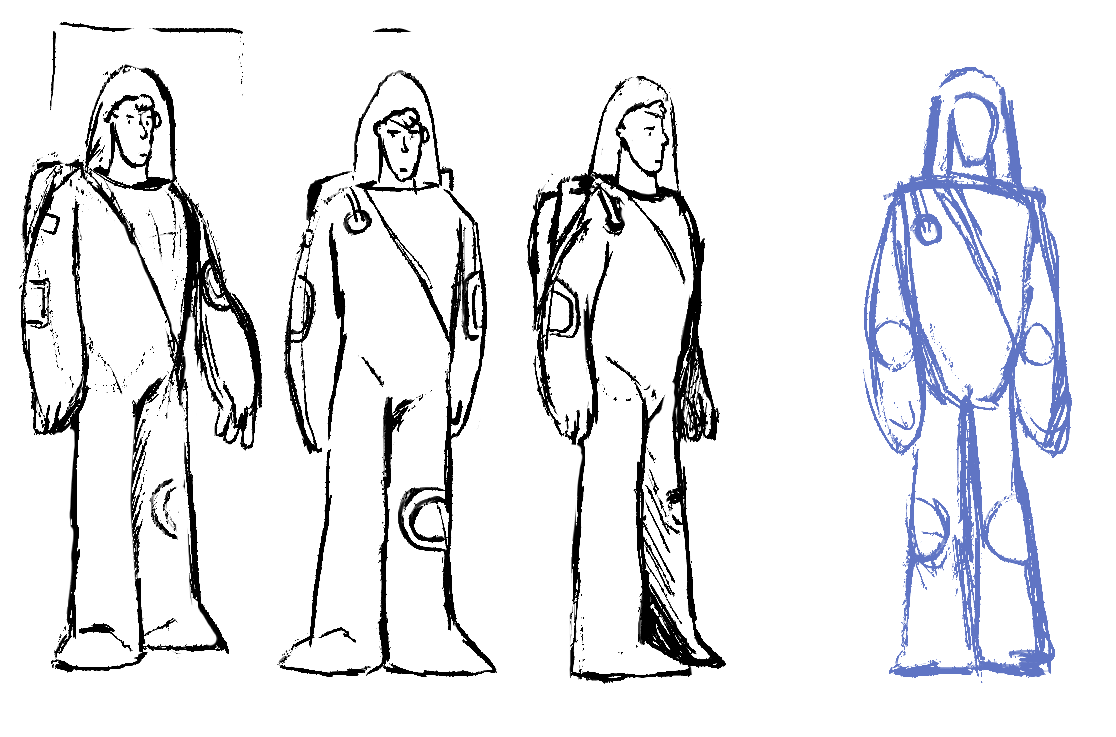
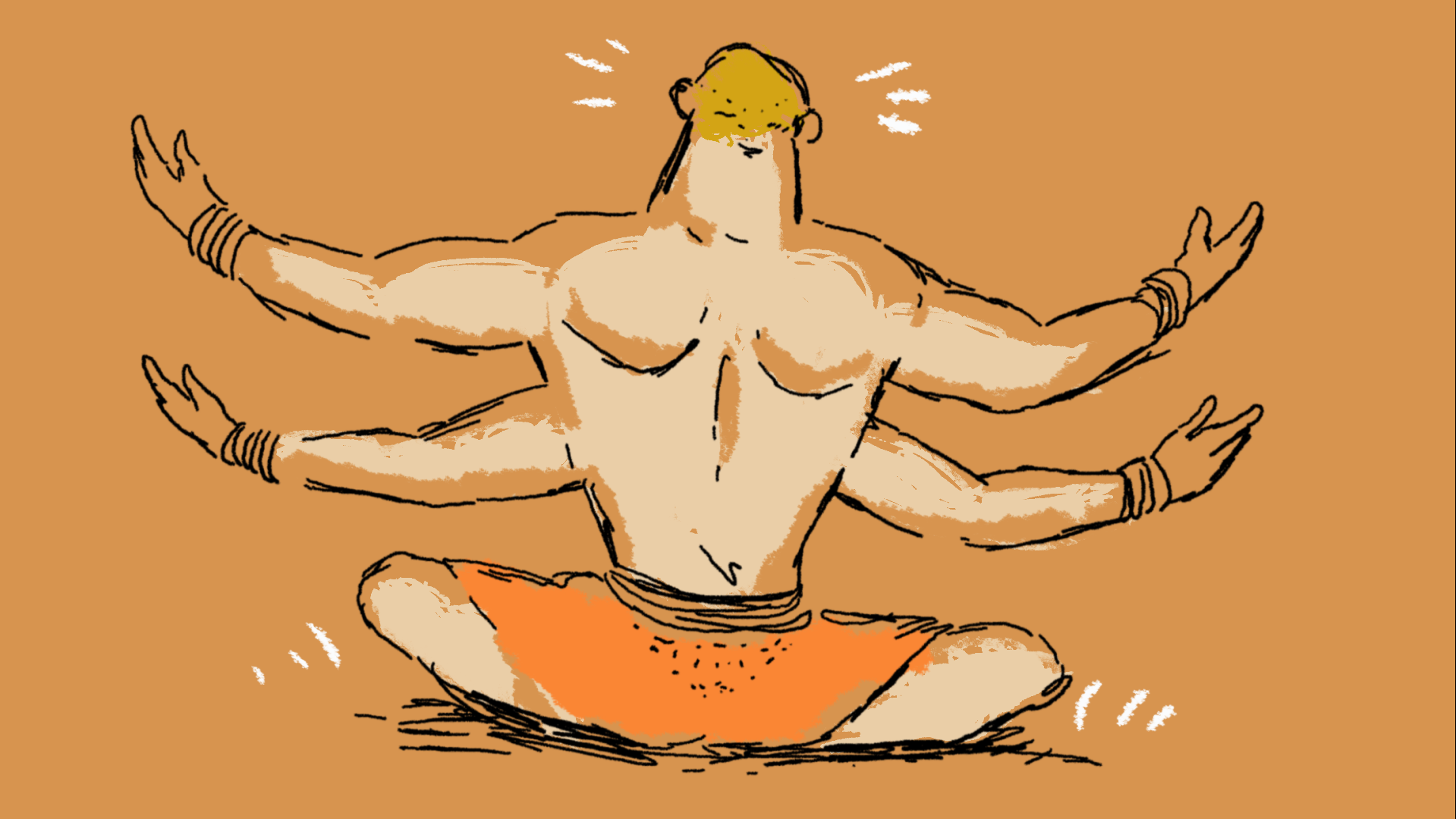

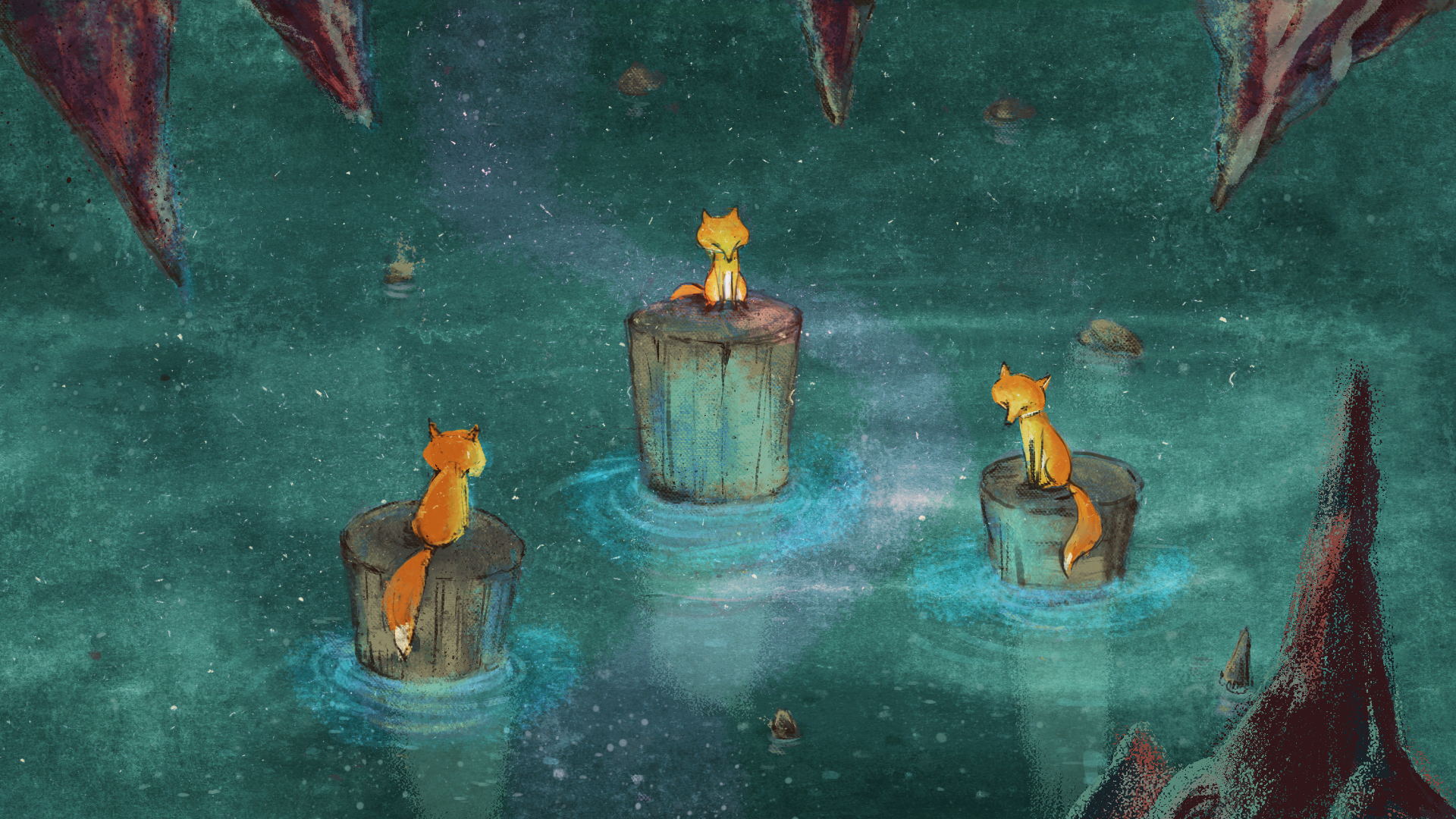


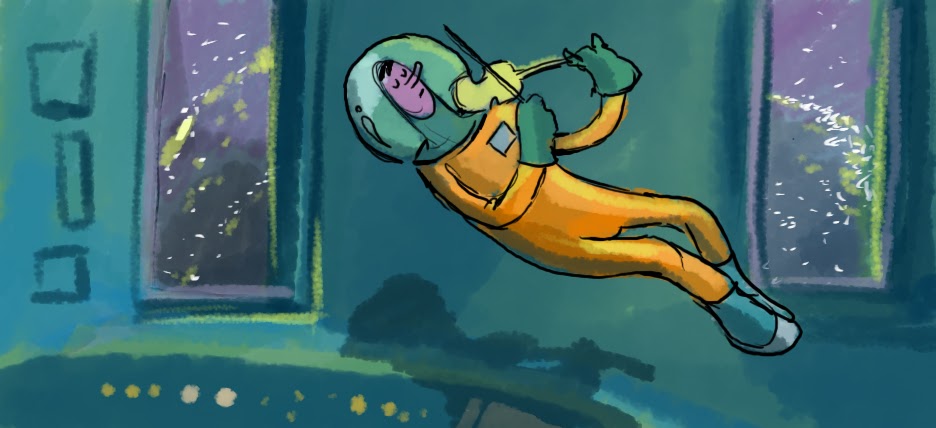
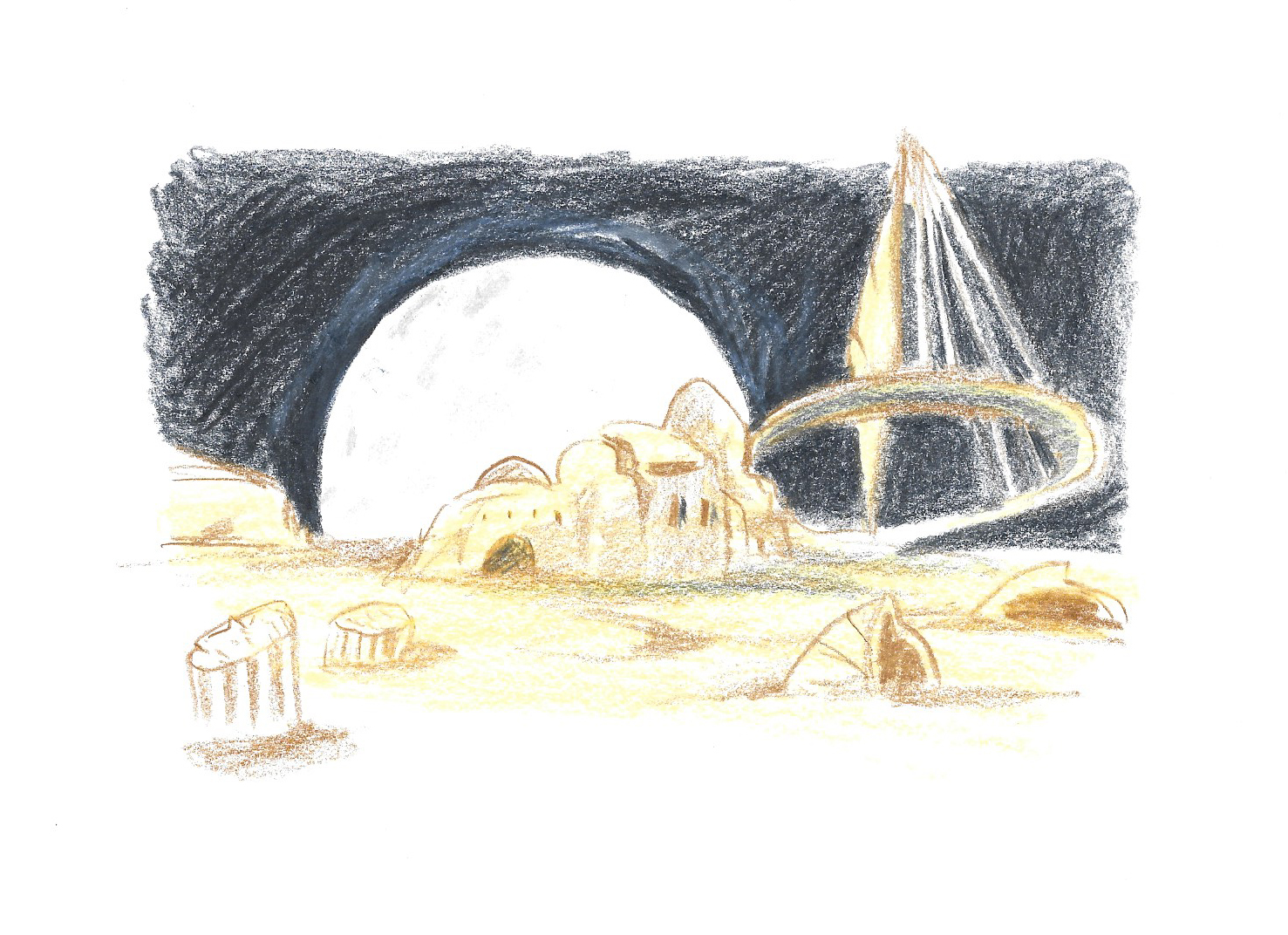
Making an animated film demands imagining every aspect of its environment and feel from scratch. We wanted to make a 2D animated film and so we joined forces with the incredible illustrator Yaniv Torem, who designed and drew most of the backgrounds with the assistance of Inbar Haruvi (see the concept art - above ). The goal was to draw the lost city as a mixture of past, present and future as elements from different eras combined in a chaotic way. The city that we created looks familiar yet alien at the same time to give the effect of an “architectural uncanny valley”. There are about 250 backgrounds for the film, all hand-drawn and digitally-coloured. The animation is also made of thousands of hand-drawn frames, most of them made by the talented Sarit Ben Joseph. I don’t want to spoil the ending so I will only say that Niggun refers to many popular Hollywood genre films. such as the Indiana Jones (1981-) and Alien (1979-) series, as well as Blade Runner (Ridley Scott, 1982), all combined with Jewish stories from the Talmud - the Jewish books of the great Rabbis from the third century (Fig. 3). I believe many popular genres have their roots in spiritual stories, and so Alon and I mined Jewish folklore and verse to try to find our inspiration for Niggun. According to one such story, when the second temple was destroyed a fox appeared from the ruins of the most sacred place in the world. To this sight all the rabbis started crying and only one, Rabbi Akiva, was laughing. He mentioned there were two prophecies: one about the destruction of Jerusalem and diaspora, and one of the return of the Jewish people to their homeland. since he saw the first prophecy came true he is now sure the second one will also happen someday.
This is what this film Niggun is about: looking for spirituality in a world of matter. The unpleasant fact is that abstract spirituality cannot be gained without evolving from “matter”, from facing real life. Judaism must be reborn through returning to our land after 2000 years in the diaspora. This made Judaism an abstract idea with no connection to the earthly burden of managing government, and without being responsible for the everyday life of a nation.
Biography
Yoni Salmon is the Head of the Animation Department at the Minshar School of Art in Tel Aviv, as well as a cartoonist, animator and animation and pop culture essayist. He is also the founder of the Shulyat Hakosem animation blog. Since graduating in animation studies, he has worked on numerous animation and art projects, including Waltz with Bashir (Ari Folman, 2008). Niggun was made with the support of the national lottery of Israel, and the art of the crew who worked on the film: Sarit Ben-Joseph, Yaniv Torem, Yuri Priymenko, Shani Broner, Katia Kravets, Nadav faibish, Dekel Weinberger, Inbar Haruvi, Tom Kouris and the voice talents of Amitai Kedar and Yuval Rapoport.


